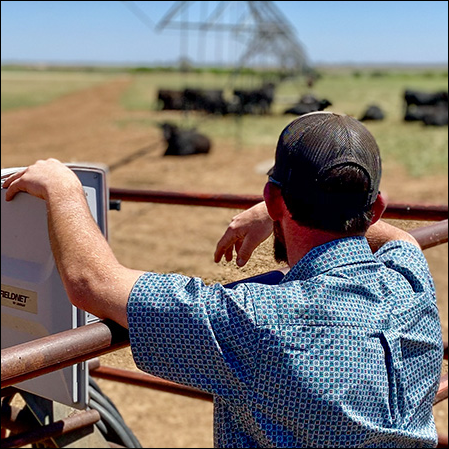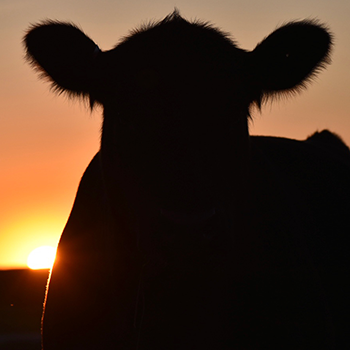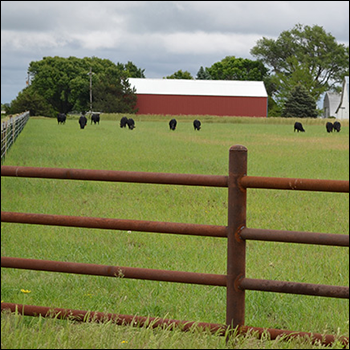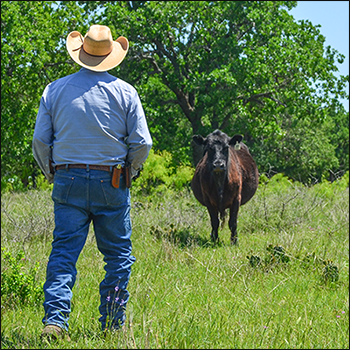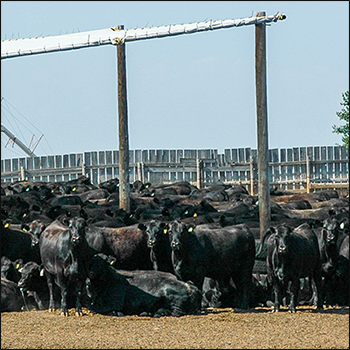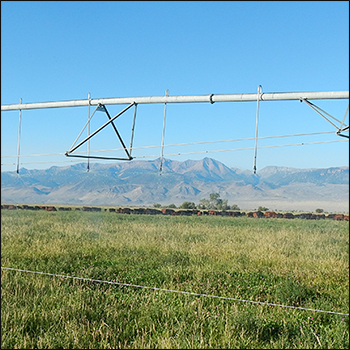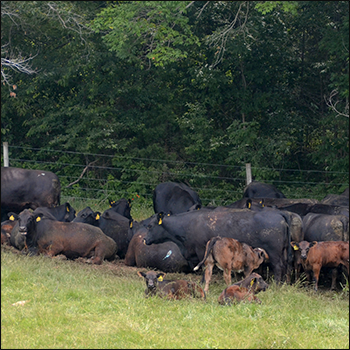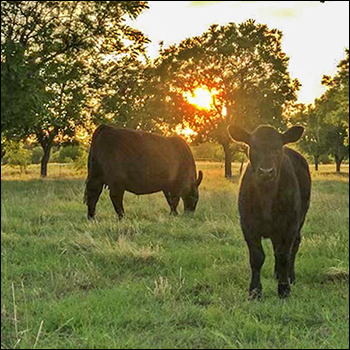
Don’t Let Risk Rule Your Marketing Plan
Consider these tips for feeder-calf sale success.
Cattle producers have experienced a lot of market volatility during the last couple of years. Still, there is no reason to allow it to govern sales decisions in 2021. Market advisors say several risk management opportunities exist to help small- and large-scale producers navigate it successfully.
“I would encourage all producers to build at least a loose risk management plan for the year, even if it is just a plan to look at risk management tools two to six months prior to when their calves will sell. Other producers prefer a rigid plan, such as hedging at a particular time each year, which works well, too,” says Josh Maples, Mississippi State University livestock economist. “Producers have different risk preferences, but the only way to know if there is a tool available that fits your operation and risk preference is to compare the choices.”
Uncertainty could fuel price instability
Weather, beef exports, feed prices and lingering COVID-19 concerns continue to fuel ongoing volatility.
Tim Petry, North Dakota State University Extension livestock marketing economist, explains that any prolonged or expanded drought might force producers to sell cows or calves early. If a smaller corn crop develops this year, it would also be a negative influence.
“For every 10¢ increase in corn prices, there is about a $1 loss per hundredweight (cwt.) in feeder prices. It’s an inverse relationship,” says Petry. “We need a record 2021 corn crop just to keep feed costs manageable. Otherwise, we will see a negative impact on feeder-calf prices by the fall.”
Should the weather and COVID-19 not weigh heavily on prices or domestic beef demand as a worst-case scenario, cattle inventory and beef exports could help buoy feeder-calf prices instead.
“Inventory has been trending down since 2019. Cow slaughter is in line with five-year and 2019 levels, so COVID-19 has not really impacted producer decisions to retain cows,” says Elliott Dennis, University of Nebraska livestock marketing and risk management economist. “Declining beef cow numbers will limit feeder-cattle supplies available to the market the next two years.”
Manage risk with what works for you
Market advisors stress there is no right or wrong way to market calves. The key is to choose a risk management plan that suits the operation and stick with it.
“Calf value is based on what they are expected to sell for out of the feedlot or out of a backgrounding operation, less the cost of gain,” says Petry. “As the expected price of finished animals goes up or cost of gain goes down, feeder-calf prices will go up.”
The first step in marketing is knowing your actual cost of production. Dennis says that means calculating the full economic cost, including pasture rent.
“Even if you don’t owe anything on the ground, there is still an economic cost to use it since the ground could be rented out at the market price,” he says.
Once cost of production is calculated (see sidebar), Maples encourages producers to explore price management tools.
“Cattle futures contracts, options, Livestock Risk Protection (LRP), or some type of cash forward contract are the best places to start,” he says. “Each tool has its own benefits, costs and usefulness, depending on a producer’s objective and operation size.”
Generally speaking, Petry says smaller-scale producers traditionally have more limited risk management opportunities than larger-scale producers who can themselves fill out truckloads for video auctions or deliver the right quantity against futures contract positions.
“For smaller producers, if the market is falling, consider prepricing production to at least establish a floor. You don’t have to preprice everything at once,” says Petry. “Smaller producers should also consider LRP. With the changes made to the program in 2020, it is more appealing.”
LRP is a federal insurance plan that allows feeder-cattle producers to protect against price declines. LRP only covers changes in price, not peril, such as mortality, marketing decisions or physical damage to livestock. Producers can choose from a variety of coverage levels and insurance periods that can mimic normal marketing patterns. With changes made to the program in 2020, LRP is easier to use and more affordable, especially for smaller-scale producers.
Premiums are now paid at the end of the endorsement period as opposed to the purchase date. Premium subsidies on coverage levels of 70%-80% of the expected price range from 35%-55%. USDA increased premium subsidies for coverage levels from 80%-100% in 2020. If, at the end of the insurance period the actual ending price is below the insurance guarantee, a producer will receive an indemnity payment for the difference between the two.
“Since the government pays about half of the LRP premium, it can be a better option than futures for smaller producers to help prevent downside risk,” says Dennis. “Producers should use LRP as a preventative tool, not reactive. When something like COVID-19 happens and producers then decide on LRP, it is already too expensive. The insurance premium now incorporates increased risk.
“Instead, knowing your costs, building a plan and using the plan to lock in protection is a more fiscally sound approach for long-term farm and ranch survival,” he continues.
At the same time, Dennis stresses that producers should still weigh the premium cost of locking in a market price above breakeven using LRP vs. put options and choose the cheaper path.
“Even if you considered LRP a few years ago and decided against it, the recent changes deserve another look,” says Maples. “With the significant premium subsidy increase, it is a more attractive option and a cost-effective risk management tool for many producers.”
Producers can purchase specific coverage endorsements for one up to 6,000 head of feeder cattle at a time with a 12,000-head annual cap. Each endorsement can be purchased for a specific number of predetermined weeks, ranging from 13 to 52, with weight categories under 600 lb. or 600-900 lb.

Market advisors stress there is no right or wrong way to market calves. The key is to choose a risk management plan that suits the operation and stick with it. |
The determined actual LRP ending value is the weighted average price of feeder cattle calculated by the Chicago Mercantile Exchange (CME) for the cash-settled commodity index price multiplied by a price adjustment factor for each type of feeder cattle and weight category. Premium rates, coverage prices and actual ending prices are posted online daily.
Add value to sale-ready calves
Another option is to add value to calves prior to sale to maximize returns. Market advisors say producers too often leave opportunity on the table that can improve their profitability.
Marketings for 550- to 600-lb. calves can vary by $20 per cwt. or more. "That is a big range and big money," says Petry.
Petry suggests producers who want to top the market invest in preconditioning programs, including castration, dehorning, weaning and vaccination.
Research and market reports continue to show the value of these production practices, adds Maples. Preconditioning programs are likely to add the most value when calves are part of a program or a sale with similarly managed cattle.
“In auctions, you will get better prices with the more information you share, too,” he says. “Buyers want genetic details. And if you want to sell in the all-natural market, be sure you have at least two buyers at an auction to make it worth your while for bidding.”
Non-hormone-treated cattle (NHTC) is another desirable niche. Dennis says there is a cost for certification, but it is worthwhile for producers wanting to be compensated for those efforts.
“Producers who retain ownership of NHTC or all-natural cattle through the feedlot may capture some value on the carcass, although you do assume some feed cost and health risk,” he says.
Finally, Dennis says don’t forget about the cows.
“There is also an opportunity to capture value on cull cows. Don’t just sell them off,” he advises. “Put some weight on them before selling as this often helps move them up in the yield and quality grade grid to capture additional revenue, although the decision to do so heavily rests on feed input prices.”
“With volatility, price risk protection will only become more important,” sums Petry. “You can’t just rely on seasonal patterns. Work with your lender, and create your opportunity.”
Editor’s note: Barb Baylor Anderson is a field editor and marketing communications consultant, specializing in writing, editing, public relations, media relations, audio/visual and economic analysis. For more calf marketing information, check out our "Feeder-Calf Marketing Guide" at https://bit.ly/FCMG2021.



